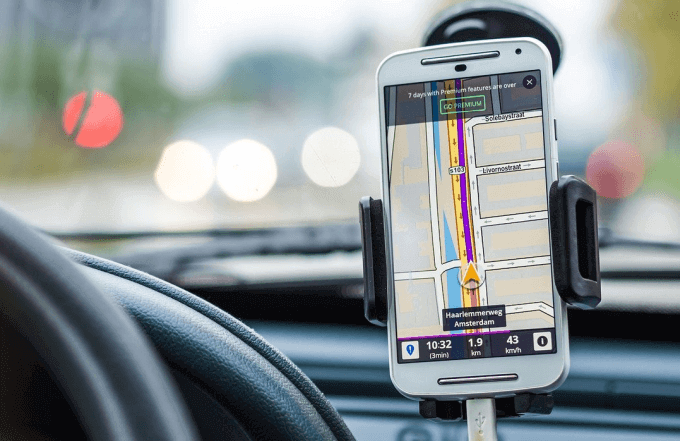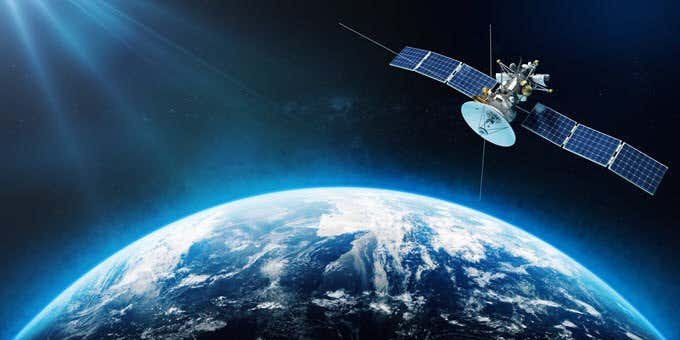It's a great icebreaker at parties
The last time you used your phone to have Google Maps pinpoint your exact location on a map, did you ever stop and wonder how does GPS work so accurately?
The Global Positioning System (GPS) system was actually launched by the U.S. Department of Defense in 1973 (known as NAVSTAR). By 1993, there were 24 GPS satellites orbiting the Earth and broadcasting orbital and positional data that the military could use for navigational and other military purposes. Today, as of this writing, there are 28.
In the 1980s, data transmitted from GPS satellites were opened up to the public, which opened up an entire market for the wide assortment of GPS navigation devices we have today.

As of the writing of this article, Russia, China, Europe, and India all have their own active GPS systems. Japan is developing its own GPS system slated to be operational in 2023.
How Does GPS Work?
While the satellite technology GPS is based on is very advanced, the way the system operates is impressively simple.
There are three components to any individual GPS navigational system.
- Satellites: GPS satellites orbit the Earth and transmit their current time and orbital position to all GPS receivers on their side of the planet.
- Command Center: The command center transmits orbital data, time corrections, and the orbital position of other satellites up to the satellites in orbit.
- GPS Receivers: A GPS receiver on Earth receives orbital times from as many satellites within range, and calculates its own position on Earth based on the positions of at least four GPS satellites.
GPS receivers utilize a mathematical principle known as triangulation to calculate its own location.
How Does GPS Triangulation Work
From any point on the planet, if you’re holding a GPS receiver (like the one in your phone), a GPS receiver receives time stamps from the synchronized clocks on each of the GPS satellites overhead.
Using the differences in timestamps, and the constant speed of light at which radio waves travel, the GPS receiver can determine the distance between where you’re standing to each satellite.
This provides the GPS receiver with the radius of the spheres with the satellites at the center, and your location at the edge of the sphere.

Since each satellite travels in a predictable orbit over the earth, the receiver can use a stored almanac of the current known position of all GPS satellites to determine where, approximately, those satellites are currently located over the earth.
With the known position of each satellite, and the measured distance between those satellites and your position, your GPS receive is able to calculate your approximate location by determining where the intersection of those three spheres come together on the surface of the Earth.
The receiver then displays that location to you on a map.
Three satellites provide a rough location, and GPS receivers require a fourth signal from another GPS satellite to determine your current altitude on the Earth’s surface using another mathematical principle known as trilateration.
How Your Phone GPS Sensor Works
Most modern smartphones today come equipped with a GPS receiver chip. This chip can receive the radio signals from GPS satellites.
Your phone’s clock is not an atomic clock, so its time isn’t synced with the atomic clocks of the satellites in orbit. However, this doesn’t matter when it comes to calculating location using signals from those satellites.

This is because your phone’s GPS receiver is focusing on the data it receives from the satellites, and a database of known satellite locations over the Earth. Since all of the satellites do have an atomic clock, the current time on each satellite is exactly the same at any given moment.
However, due to distance from the satellite, and the fact that the radio signals travel at the speed of light, the differences between each received timestamp reveals the distance between your phone and each of the satellites.
Here’s how this GPS process works:
- All four satellites transmit the same exact timestamp to your phone at 5:12:14 PM.
- Your phone receives that timestamp at 5:12:15 from satellite 1.
- It receives the timestamp at 5:12:16 from satellite 2.
- Finally, at 5:12:17, it receives the timestamp from satellite 3.
This tells your GPS receiver that it took 1 second for the radio signal to reach it from satellite 1, 2 seconds from satellite 2, and 3 seconds from satellite 3.
The speed of light is a known constant of 299,792,458 meters per second.
Using simple math, the receiver can calculate that its distance is roughly 300 thousand meters from satellite 1, 600 thousand meters from satellite 2, and 900 thousand meters from satellite 3.

Using a lookup table from a GPS satellite database, your phone’s GPS receiver knows the approximate current location over the earth of all three satellites, which provides longitude and latitude coordinates of all three.
With that information, your phone is able to calculate your own longitude and latitude coordinates on the Earth.
Using your known coordinates, your GPS receiver can then use the distance measured between itself and a fourth satellite to determine what altitude above the Earth you’re located.
What Is An Assisted Global Positioning System?
Before smartphones started integrating GPS circuitry, people typically would use handheld GPS receivers that ran off AA batteries. Or they would install GPS units in cars, which ran connected to the phone’s battery.
This was because radio communication requires more power. The limitation of this is that you often had to wait several minutes for your GPS receiver to “lock onto” enough GPS satellites to calculate your position.
Smartphone manufacturers got around this battery limitation by combining its existing technology of cellular triangulation. Long before phones were GPS enabled, they could use signals coming from cellphone towers to triangulate your position, using the same sort of triangulation timestamp and distance technology as with GPS satellites.

Unfortunately, because cell phone towers are at ground level, this navigational calculation is far less accurate. So your smartphone GPS software will first use cell signal triangulation to determine your approximate position, and then update that position once satellite GPS data is ready.
This allows modern smartphones to reserve battery power by only using GPS data when those location updates are required. This is why you may often see your location on Google Maps occasionally jump to a new location when more accurate data is available.





